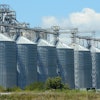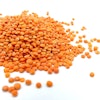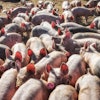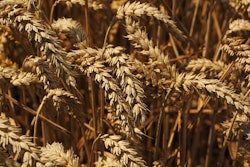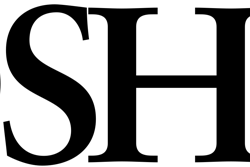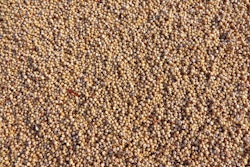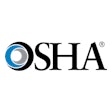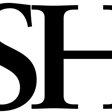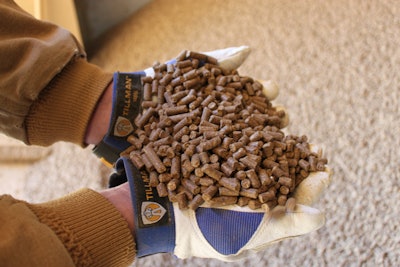
Demand for meat, dairy and egg products continues to increase as the global population grows, and improving economic conditions allow for better diets and reduced world hunger. Along with increased consumption of animal-based foods comes the need for more animal feed production. Following an unprecedented 2020, the following are six key issues and trends that will be factors for the U.S. feed industry during the upcoming year.
1. COVID-19
Deemed “essential,” the feed industry avoided some of the disruption and economic turmoil from the pandemic in 2020, but COVID-19 persists as a significant challenge.
To reduce the potential for employees and other personnel from contracting COVID-19, feed companies implemented various measures. These practices, including implementing travel restrictions, employing new communication technologies, enhancing facility and employee hygiene, expanding the use of personal protective equipment, screening and monitoring employee health and minimizing contact with non-facility personnel, will continue in 2021 and may be the new “norm” moving forward.
Experiences during the COVID-19 pandemic also illustrated how feed supply chains are intricately balanced and fine-tuned to meet demand. In response to exposed weaknesses, U.S. feed companies will continue to seek new supplier relationships with geographically diverse partners to ensure the adequate sourcing and supply of necessary inputs. In addition, compound feed manufacturers will continue to optimize flexibility in the formulation of products to minimize the impact of ingredient shortages.
Although significant recovery has occurred for the animal protein industry since the outset of the COVID-19 pandemic, uncertainties remain. Major COVID outbreaks in 2021 could again disrupt U.S. livestock and poultry plant processing capacity, which would have an adverse effect on feed manufacturing operations.
2. Consumer Preferences
Evolving consumer food preferences and demands from food retailers continue to dramatically impact agricultural production. U.S. feed companies will likely need to consider how to deal with various consumer-related topics, including genetically modified organisms, organic feed and livestock production, food and feed safety, animal welfare concerns and sustainability. From a consumer standpoint, transparency within the food supply chain is expected. Feed companies will need to respond effectively to questions and justify practices related to food retailers and their customers’ expectations.
3. Animal Agriculture & Antimicrobial Drugs
Reduced use of antimicrobial drugs during the production of animal-derived foods is sometimes associated with consumer preference trends, but the more significant underlying issue is antimicrobial resistance and public health. In response to concerns about growing antimicrobial resistance, the U.S. Food and Drug Administration (FDA) has taken various actions in recent years to promote the judicious use of medically important antimicrobial drugs in food-producing animals.
The One Health initiative — a collaborative, multisector approach to achieve optimal health outcomes recognizing the interconnection between people, animals, plants and the environment — is gaining momentum and will continue to focus on antimicrobial resistance as a major public health issue. In conjunction with One Health, FDA, the Centers for Disease Control and Prevention (CDC) and the U.S. Department of Agriculture (USDA) intend to implement additional plans to enhance antimicrobial resistance monitoring and antimicrobial drug use in animals during 2021.
As the use of antimicrobial drugs in animals comes under increased scrutiny, U.S. animal agriculture and the feed industry will need to continue efforts to develop and evaluate alternative technologies to minimize animal disease and ensure food safety. As these new feed products are developed, the regulatory approval process will need to be positioned to bring these products to market efficiently.
4. Foreign Animal Diseases
As countries in Asia and Europe continue to experience outbreaks of African Swine Fever, the U.S. feed industry will keep playing an important role in safeguarding U.S. animal agriculture from foreign animal diseases.
Efforts in this area will include gaining a better understanding of the role feed and feed ingredients serve as potential vectors for disease, enhancing practical biosecurity protocols, implementing disease response and preparedness plans, interacting with FDA and USDA on potential regulatory responses and further research on feed mitigation measures. Continued focus will be placed on imported grains and feed ingredients that originate from countries where foreign animal diseases are of concern and how the potential risk associated with these products can be minimized.
5. Regulatory Environment
FDA’s on-going implementation of the Food Safety Modernization Act (FSMA) will continue to impact the industry during 2021. Inspection activity related to FDA’s FSMA-related preventive controls regulations for animal food was significantly curtailed during the past year due to the COVID-19 pandemic. Still, the number of FDA inspections during 2021 could rebound. These inspectional activities formalize the FDA’s compliance expectations and industry’s obligations under the new requirements.
The feed industry will also engage in responding to FSMA-related rulemakings associated with additional food traceability requirements, amending the food facility registration regulations, and revising aspects of the preventive controls rule for animal food.
On the Occupational Safety and Health Administration (OSHA) front, the feed industry anticipates proposed regulations to revise requirements associated with Lockout/Tagout, powered industrial trucks, walking-working surfaces and emergency response and preparedness in 2021.
Further, some states in 2020 began developing and instituting their own workplace safety rules in response to the COVID-19 pandemic that applies to feed companies. More state initiatives of this type may occur during 2021 as efforts to prevent the virus’s spread continues.
6. Trade
Recent trade agreements with Mexico, Canada, Japan and China should be positive for the U.S. feed industry during 2021 and beyond. In addition to the non-commodity specific purchase requirements for China, the U.S.-China agreement, the U.S.-Mexico-Canada agreement and the U.S.-Japan agreement should help facilitate cross-border trade flows by making improvements to the rules of agricultural trade.
The agreements will require higher levels of regulatory coherence and cooperation. They must implement timelines and notifications for adverse import checks, the use of technical consultations for sanitary and phytosanitary (SPS) disputes and that SPS standards be grounded in science and based on proper risk assessments and implemented using accepted risk management techniques. Removing non-tariff barriers is a positive for U.S. agriculture and the feed industry due to competitive advantages.
拜登新政府下前进,the feed industry can anticipate a return to a more multilateral approach to trade negotiations and heightened U.S. involvement in the World Trade Organization (WTO) with a renewed focus on reforming WTO rules. ■
About the Author
David Fairfieldwas promoted to vice president of feed services in March 2012, after having served as director since joining the staff in 2001. He manages the NGFA’s activities pertaining to feed and feed ingredient manufacturing, and livestock/poultry integrator operations. He directs the NGFA’s highly acclaimed Model Feed Quality Assurance Program and distance-learning courses, and other feed-related educational and training programs. He also assists in membership recruitment and retention programs for the feed sector and provides assistance to affiliated associations.

